How to water tomatoes to make them turn red faster: the best fertilizers for tomatoes and life hacks to speed up ripening
Every gardener wants to get a rich harvest of red, large and tasty tomatoes. But many novice farmers, during the growing process, do not find an answer to the question of why the tomatoes in the greenhouse do not turn red.
To deal with this problem, you need to find out what to water the tomatoes with so that they turn red faster and what other ways there are to speed up the fruiting.
Why do tomatoes not turn red for a long time in the garden, in the greenhouse and on the balcony?
The approximate time it takes for tomatoes to ripen after flowering begins is 40-55 days.. The exact period depends on the type of vegetable crop.
During the first month, the green fruits increase in size and become dense. After this, they need about 20 more days to ripen.
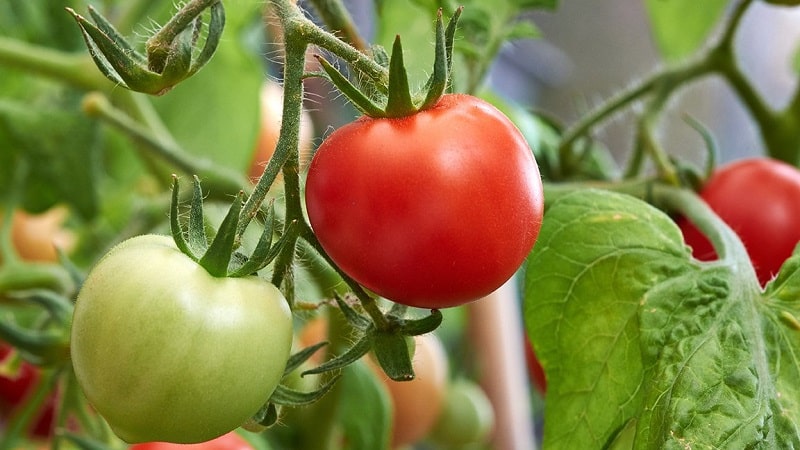
There are several reasons why tomatoes ripen more slowly. in the greenhouse, open ground and on the balcony:
- Lighting. How the tomatoes turn red will depend on the lighting in the room. If there is not enough light for the fruits, they will develop unevenly and slowly. In open ground, ripening is slowed down by cloudy weather.
- Nutrition. If the fertilizing was incorrect (for example, with an excess of nitrogen), the stems become large and the fruits become small and may not turn red for a long time.
- Temperature. If the temperature is too low or too high, tomatoes will not grow as well. They do not produce the pigment lycopene, which gives tomatoes their red color.The optimal temperature for tomato growth is +15…+35°C.
Features of accelerating ripening in a greenhouse and in open ground
To speed up the ripening process of tomatoes in open ground, adhere to the following rules:
- If cold dew falls at night, cover the tomatoes with foil overnight. This will protect the fruits from moisture and reduce the likelihood of late blight.
- It is better to remove brown tomatoes so that they ripen elsewhere.
- Spray the plants with iodine solution - this will strengthen the immune system.
- Remove the lower leaves of the plant up to the clusters where the fruits are already ripening.
If tomatoes grow in a greenhouse, these rules apply to them too. However, if the greenhouse has heating, then it is recommended to leave no more than 12 brushes on the plant. If there is no heating, then no more than 7.
In greenhouse conditions, before the onset of cold weather, the fruits on the middle clusters are fully ripened, and on the tops - partially.
Experienced gardeners recommend removing the shoots and leaving no more than 17 leaves on the plant.
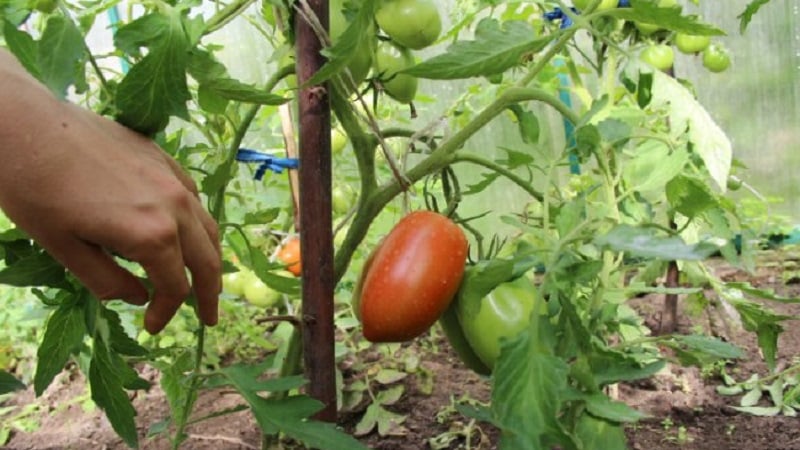
Feeding tomatoes for early ripening
Ways to speed up the ripening of tomatoes used only if the timing is appropriate and the number of ripe fruits is insufficient. In many regions of our country, this is relevant for the last summer months: from the end of July to the end of August.
Proper feeding plays an important role. For rapid ripening, it is necessary that tomatoes receive the required amount of nitrogen, phosphorus, potassium, calcium, magnesium and sodium.
Experienced gardeners recommend combining organic and mineral fertilizers. With this approach, tomatoes not only grow faster, but also bear fruit more abundantly.
Feeding with iodine
Iodine - a traditional fertilizer that gardeners use to feed tomatoes. It solves two problems at once: prevention of fungal infections and feeding. Thanks to iodine, nitrogen metabolism in the soil improves and resistance to various infections increases, the plant begins to bear fruit better.
Lack of iodine leads to reduced yields and incomplete ripening of fruits.
Reference. Tomatoes are watered with iodine solution in a ratio of 1 drop of the substance per 3 liters of warm water.
Feeding with ash
Ash is an effective remedy for strengthening the root system and protecting against pests. It is rich in nutrients necessary for the growth and development of the plant. Ash contains phosphorus, potassium, nitrogen, sodium, calcium and magnesium.
The infusion is prepared as follows: a glass of ash is dissolved in 5 liters of water. The solution is infused for a week. After this, the tomatoes can be watered.
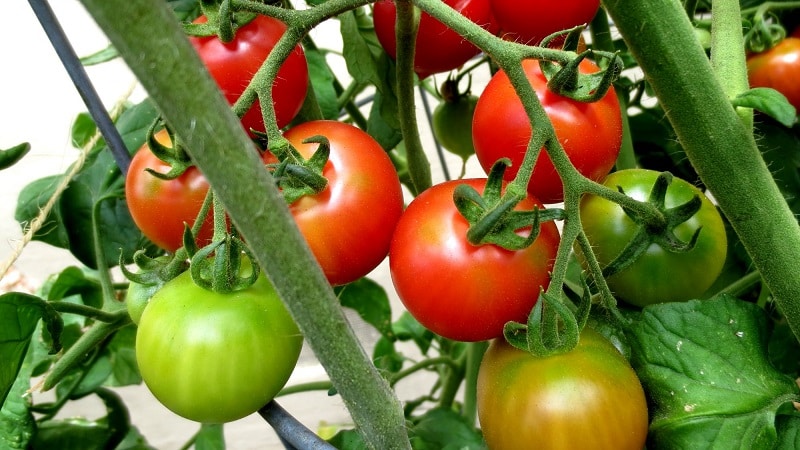
Watering with potassium humate
Humate is a mixture of salts of various microelements and acids. Fertilizer is formed due to organic deposits. Humate improves air penetration into the soil, kills microbes, and neutralizes toxins.
Potassium humate is an excellent organic fertilizer for tomatoes: it increases productivity and makes the roots stronger. For feeding, use a solution with a concentration of 0.05%. 2 liters of the substance are distributed per 1 m² of soil.
Read also:
Why do tomatoes crack when ripening in a greenhouse?
Alcohol bush injections
Gardeners accelerate the ripening of unripe tomatoes and activate flowering with alcohol injections.
Reference. Alcohol injections do not change the taste of the fruit: the tomato contains no foreign odors and no bitterness is felt.
Alcohol injections can be administered at any stage of development. vegetable crop.But when using this method, follow the safety rules:
- for feeding, use vodka no stronger than 45°.
- use only sterile syringes and wear gloves, disinfect the injection site.
Injection with alcohol is carried out only once.
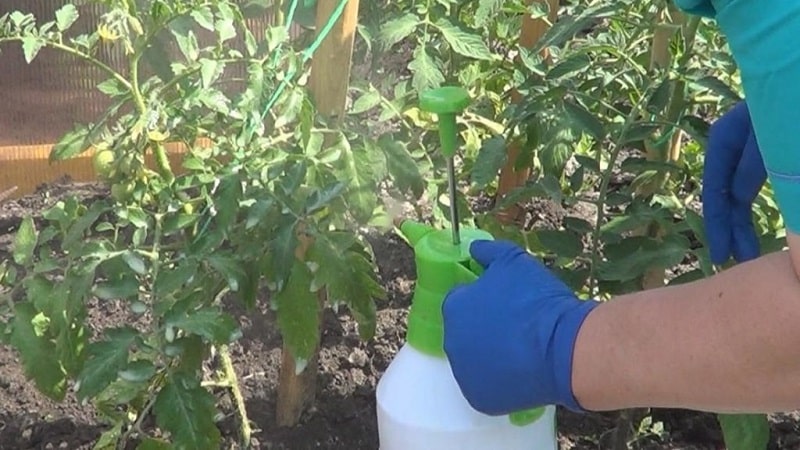
Additional ways to make tomatoes turn red
If you have followed all the care recommendations, but the fruits have not started to turn red, try additional ways to speed up the ripening of tomatoes.
Removing new flower stalks
For large, sweet tomatoes, remove new buds and flowers, which form on the tops of bushes. The young fruits will no longer be able to ripen, and the strength will be taken away from the bush, which will slow down the development process of the remaining tomatoes.
Trim the tops of tall bushes and remove all inflorescences. If the bushes are short and medium-sized, then all flower brushes that interfere with the normal development of fruits are also cut off on them.
Stepsoning
Another way to stimulate the growth of tomatoes is pinching.
The plant branches well, forming stepsons (side shoots). Flower clusters appear on new shoots. After the extra shoots are removed, the plant does not waste energy on the extra shoots, and its energy is directed to ripening the fruits.
Food restriction
For the growth of tomatoes, many experienced gardeners use forced food restriction.
An incision is made in the stem (12 cm from the ground) and a thin wooden plate (10-15 mm) is placed in the gap that has formed. Thanks to this, not only the flow of nutrients into the plant is controlled, but also their outflow.
After using this method, tomatoes begin to ripen much faster.
Why do tomatoes picked from the bush not ripen?
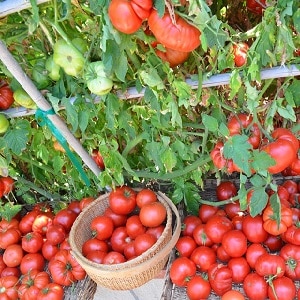 Why don't tomatoes turn red when picked from the bush? There are several reasons for this:
Why don't tomatoes turn red when picked from the bush? There are several reasons for this:
- low room temperature;
- tomatoes are picked early from the bush (before the first phase of ripening);
- lack of lighting.
To make tomatoes pour faster, you can put already ripened fruits with them. They will help others acquire the red color faster.
Why does a tomato turn red with green spots near the stalk?
If the temperature is higher or lower than normal, then not only do the fruits slow down during the ripening process, but also a green-yellow edging appears on the tomato stalk.
The concentration of the coloring pigment lycopene in fruits decreases, and therefore the uneven redness of tomatoes disappears.
Important! To avoid a sharp temperature change between day and night, it is necessary to ventilate the greenhouse during the day and turn on the heating at night.
Ripening of fruits with signs of late blight
Tomatoes are susceptible late blight. The disease manifests itself in blackening of the fruits and leaves of the plant and negatively affects the yield. Late blight most often appears in the second half of summer. Cold and dampness are favorable conditions for the development of fungus.
Eating tomatoes that suffer from late blight, it is possible, but they need to be processed. Within 15 seconds, the fruits are placed in water at a temperature of at least 60°C. Next, the tomatoes are dried and left until fully ripe.
Reference. Infected red fruits should be eaten immediately or used for preservation. Green ones are best preserved.
What not to do while tomatoes are ripening
In order not to harm the tomatoes, Avoid common beginner mistakes:
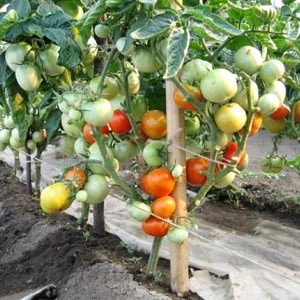 Abundant fertilizing with nitrogen. The use of fertilizer for tomatoes is allowed only in the first half of summer. It is not recommended to do this later.Fertilizing with nitrogen at this time will worsen the taste of tomatoes and reduce yield.
Abundant fertilizing with nitrogen. The use of fertilizer for tomatoes is allowed only in the first half of summer. It is not recommended to do this later.Fertilizing with nitrogen at this time will worsen the taste of tomatoes and reduce yield.- Abuse of watering. Tomatoes do not like it when the humidity in the greenhouse changes. The soil should not be allowed to dry out and then be watered abundantly.
- Excess fertilizer for the soil. Tomatoes are contraindicated in soil richly fertilized with organic matter. When planting seedlings, manure and bird droppings should not be placed in the holes - this will increase the risk of late blight.
- Abundant feeding with manure. It is not recommended to feed tomatoes with manure more than 2 times per season.
- Abundant fertilizing with urea. When planting, you should not put the substance in the holes or water it too often. If tomatoes need this compound, then only at the beginning of development (no later than the first days of June) spray the leaves with urea solution. For 10 liters of water add 1 tbsp. l. substances.
- Using nitrates as a fertilizer and creating a steam room effect in the greenhouse. This will negatively affect the yield and quality of the fruit.
Tips and recommendations from experienced summer residents
Experienced gardeners advise following a few simple rulesthat will help you grow tomatoes large and tasty:
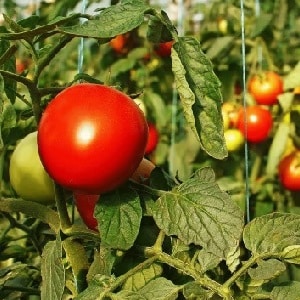 It is recommended to plant seedlings in rows. You can plant carrots between the rows to repel pests.
It is recommended to plant seedlings in rows. You can plant carrots between the rows to repel pests.- Two weeks after planting the seedlings, the plant is sprayed with solutions containing copper.
- Do not plant tomatoes for more than 3 years in a row in one place.
- Tomatoes love to be watered at the root.
- The soil should be loose and rich in humus.
- You should not use manure as fertilizer more than 2 times per season.
- It is better to sow twice as many seeds as you want to produce plants. It is better to remove weak bushes and leave only productive plants.
- The first feeding of tomatoes after planting seedlings in the ground is done in early June.
Conclusion
Tomatoes are finicky plants, so it is necessary to follow the techniques for growing this vegetable crop. Temperature, food and lighting must comply with standards. Do not overuse heavy fertilizing with manure and urea - this will have a bad effect on the plant and it may develop late blight.
If tomatoes do not turn red for a long time, use mechanical (pinching, removing flower stalks, dietary restrictions) or chemical methods (treatment with iodine, spraying with growth stimulants, fertilizing with boric acid).